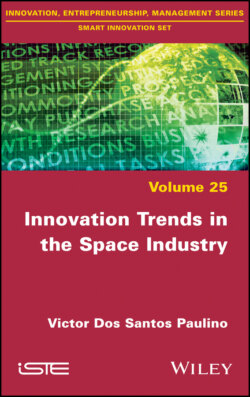Читать книгу Innovation Trends in the Space Industry - Victor Dos Santos Paulino - Страница 8
The evolution of the space industry in light of economic considerations
ОглавлениеThe space industry was born out of the desire of the Russian and American military to gain an advantage at the beginning of the Cold War. How can this type of evolution be described? What role do customers play in this evolution and innovation? Are there any characteristic phases in the dynamics of the space industry?
To answer these questions, we propose to use the industry lifecycle theory (Anderson and Tushman 1990; Gustafsson et al. 2016; Klepper 1997, 2010; Klepper and Graddy 1990; Utterback and Abernathy 1975). This theory is one of the most important for understanding innovation (Dodgson et al. 2008). It breaks down the development of the industry into distinct phases: birth/emergence, growth/takeoff, maturity, and decline. In addition, it identifies several lifecycles such as product, innovation, and adoption. This makes it possible to study the dynamics of an industry according to essential dimensions such as sales and innovation rates. Lifecycle theory will be at the heart of this book, but it has some limitations. First, the influence of demand on the evolution of the industry is poorly understood since attention is generally focused on the role of producers (Di Stefano et al. 2012; Forbes and Kirsch 2011; Saviotti and Pyka 2013). This poses a challenge to understand the evolution of industries in which institutional customers, such as Ministries of Defence, play a major role, as is the case in space (Malik 2017; Mowery and Rosenberg 1989; Scranton 2006; Spencer et al. 2005). Another limitation is that the birth of an industry remains a relatively unstudied phenomenon. (Aldrich and Fiol 1994; Forbes and Kirsch 2011; Nygaard 2008; Zhen and Démil 2015). This seems to us to be problematic because the characteristics of the emergence phase seem to have lasted for many years in the space industry. Examples include low competition, niche markets, and intense innovation efforts.
Studying the long-term evolution of the space industry in light of economic considerations leads us to show that customers have a strong influence on the emergence of the space industry and innovation. By customers, we mean Ministries of Defence, space agencies (e.g. NASA, CNES, ISRO), and commercial satellite operators (e.g. SES, Intelsat, Arabsat, Türksat). First, we show that the space industry is characterized by a long emergence phase that lasts more than 50 years (1). We then show that customers are shaping the industry by helping to create four distinct periods between 1957 and 2011 (2). The influence of customers is observed through the pursuit of five objectives. Military customers have created the industry by pursuing three objectives: military, national prestige, and science and technology. This has led to iconic space programs such as Sputnik and “GPS.” Space agencies (e.g. NASA, CNES, and ISRO) shape the industry by pursuing certain objectives similar to military customers such as those of national prestige and science and technology. However, they also pursue their own objective, that of economic benefits. Their iconic programs have been, for example, the Apollo and the International Space Station programs. Finally, commercial satellite operators have a single objective of their own: the pursuit of profits. By focusing on the weight of the science and technology objective among customers between 1957 and 2011, we observe a slowdown in innovation in the industry (3). Over time, the space industry has become kind of a “sleeping beauty” with underexploited technological and commercial potential.
These results contribute to an understanding of the long-term evolution of the space industry in light of economic considerations such as the role of customers, innovation efforts, and industry lifecycle theory. These results also extend the scope of the lifecycle theory to the space industry. By emphasizing the central role of customers, we reinterpret the role of supply and demand during the emergence phase. We also observe that the pursuit of profits remains a secondary objective for customers during the emergence phase.
